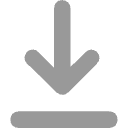| 1 | 86 | 8 |
 阅读 阅读 |
 下载 下载 |
 被引 被引 |
目的:探讨晕船的发病诱因,为预防晕船提供科学依据。方法:对675名参加海上训练的人员进行问卷式调查。结果:天气状况、海浪大小、舰艇的大小、通风状况、人员的密度、饮食、睡眠、过度疲劳等与晕船有关。结论:加强艇的通风、保持空气新鲜、去除异常气味、降低噪音与振动、减少视觉刺激、平卧休息、降低重心、加强睡眠、注意饮食可以降低晕船的发生率。
Abstract:Objective: To explore predisposing factors of seasickness and to provide scientific basis for the prevention of seasickness.Method: Questionnaire was conducted with a population sample of 675 officers and men who participated in the sea training.Results: Weather conditions,sea state,size of the ship,ventilation,populated density,diet,sleep and fatigue were all related to seasickness.Conclusion: Good ventilation,maintenance of fresh air and removal of odors in ship cabins,decrease in noise and vibration levels,decrease in visual stimulation,proper rest on bed,good sleep and satisfactory diet could effectively reduce incidence rate of seasickness during sea training.
[1]WIKER SF,KENNEDYRS,Mc CAULEY M E.et al.Suscep-tibility to seasickness;influence of hull design and steaming direc-tion[J].Aviat Space Environ Med,1979,50(10):1 046.
[2]GAHLINGER PM.Cabin location and the likelihood of motionsickness in cruise ship passengers[J].J Travel Med,2000,7(3):120.
[3]龚锦涵.航海医学[M].北京:人民军医出版社,1996.495-505.
[4]侯建萍,盖晓波.航海晕动病发病机制的探讨[J].海军医学杂志,2005,26(4):371-373.
[5]许恒.海上医疗队员晕船的饮食管理[J].中华航海医学与高气压医学杂志,2005,12(2):127.
[6]李华青,郭俊生,李敏,等.某军校学员和战士海训时晕船对饮食行为的影响[J].解放军预防医学杂志,2004,22(4):274-275.
基本信息:
DOI:
中图分类号:R83
引用信息:
[1]侯建萍,吴爱平,宋青扬,等.海上训练晕船发生率的调查分析[J].海军医学杂志,2006(04):335-336.
基金信息: